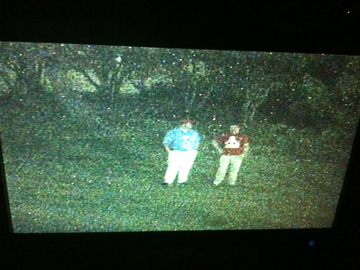FLIR Sees All Color With Night Vision Cameras
After five years writing for the security industry, technology continues to amaze me. After every tradeshow, I leave thinking I’ve seen the latest and greatest and probably won’t be bowled over by technology again, but year after year, I’m proved wrong, and this year is no different.
 The night before ASIS began, FLIR held a press event at the Las Colinas Country Club in Irving, to showcase the company's color night-vision cameras.
The night before ASIS began, FLIR held a press event at the Las Colinas Country Club in Irving, to showcase the company's color night-vision cameras.
FLIR acquired Salvador Imaging in June 2009, a manufacturer of high-performance CCD and electron multiplied CCD, or EMCCD, sensors for Department of Defense applications.
With the advanced EMCCD sensors, FLIR was able to integrate the technology to offer color night-vision cameras that provide high-quality color video in lighting conditions from full daylight to starlight, without extra lighting infrastructure. In fact, FLIR's color night vision cameras provide full-color video in lowlight conditions that render conventional CCD technologies useless.
In the demonstration, the company’s color night-vision camera was compared to a thermal imaging camera and a top-of-the-line Sony CCD camera. On a pitch-black golf course, with the color night vision camera, two men – one wearing a blue shirt and red cap and another wearing a red Atari shirt – are clearly visible. With the tradition thermal camera, you can see two men but no color details, and on the CCD camera, nothing can be seen.
Also notable was the announcement of security cameras that feature 640x480 resolution. The traditional resolution was 320x240. The combination of megapixel resolution and thermal imaging is new. These thermal cameras now offer 307,200 pixels as compared to the traditional 76,800 pixels, which equals to four times the resolution. And more pixels mean better image quality, longer detection ranges, enhanced background details and more cost effectiveness.
About the Author
Sherleen Mahoney is a Web managing editor at 1105 Media.